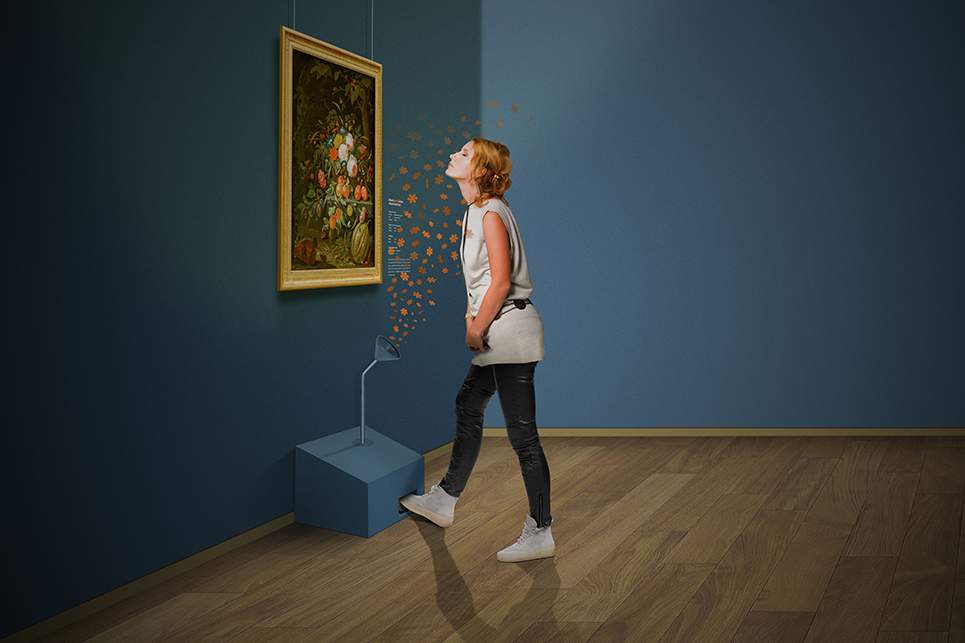An exhibition in which it is possible to ... smell art history. This is the unusual experiment that the Mauritshuis in The Hague (the home of Jan Vermeer’s celebrated Girl with a Pearl Earring ) will launch as soon as the Dutch museums reopen their doors, and until August 29, 2021. An exhibition, entitled Fleeting - Scents in Color (“Ephemeral - Scents in Colors”), will attempt to recreate the smells (pleasant or otherwise) that could be smelled in seventeenth-century Holland. For example, a floral bouquet of a still life, the aromas of amber and myrrh prevalent in the homes of wealthy families, or the less pleasant stench of a canal in seventeenth-century Amsterdam, used by the Dutch of the time as a... garbage dump. At the time, however, people were convinced that bad smells were detrimental to health, and consequently various ways were devised to hide them. Rich women, for example, wore chains that had perfume bottles (a very expensive fashion accessory of the time).
The idea is that Dutch seventeenth-century paintings often conveyed such strong olfactory sensations that one could imagine being in the depicted scene. Moreover, it is a different way for the Mauritshuis to experience art. Accordingly, Fleeting - Scents in Color is intended to be, a note says, “a journey of discovery, which will inspire visitors to experience art from a new perspective.” Scents will come out of special diffusers that will allow visitors to breathe in the fragrances of a closet filled with freshly washed linen, the aromas of a domestic interior, and of course the foul stench of a canal. And, interestingly, the experience can also be replicated in one’s own home: in fact, the Mauritshuis is offering for sale a fragrance box, a box with scents from the exhibition, to be sniffed perhaps when making a virtual visit to the exhibition.
The themes of the exhibition also have to do with fragrances: real “portraits” of smells and fragrances from the 17th century will be set up, there will be insights into the role of fragrances in history, and still focus on the olfactory suggestions of works of art, on the links between fragrances and religion (aromas are especially important in Catholic ritual, since the divine can also reveal itself through a fragrance), and on the new aromas coming from the colonies. “Although fragrance is the protagonist of the exhibition and there will be all kinds of smells to smell,” specifies the Mauritshuis, “it will mainly be the works of art that tell the story.” There are about fifty paintings, drawings, prints, and objects that will tell about scents, health, and hygiene.
Those who want to learn more can check out the Mauritshuis website.
 |
| An exhibition in Holland recreates, and makes you smell, the smells of scenes painted in paintings |
Warning: the translation into English of the original Italian article was created using automatic tools. We undertake to review all articles, but we do not guarantee the total absence of inaccuracies in the translation due to the program. You can find the original by clicking on the ITA button. If you find any mistake,please contact us.